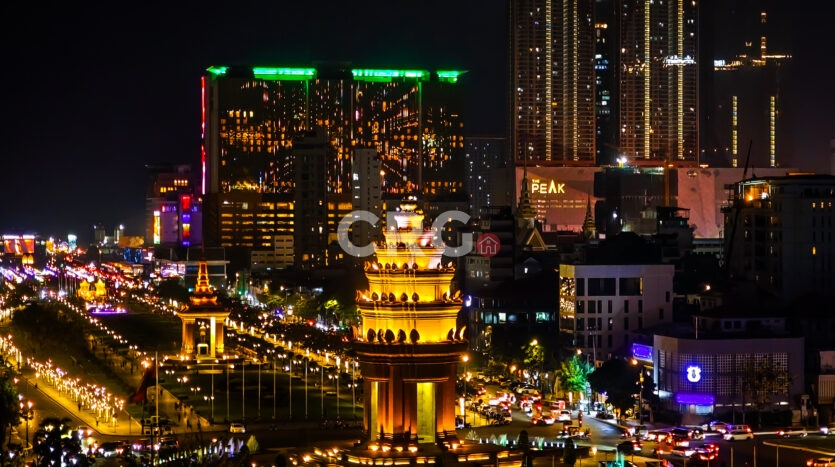Exploring Cambodia’s House Market: A Comprehensive Guide
Unlocking Property Potential in the Kingdom of Wonder
Cambodia’s real estate sector has undergone a dramatic transformation in the past two decades, evolving from an underdeveloped post-conflict market into one of Southeast Asia’s most promising investment landscapes. With its youthful population, rapid urbanization, infrastructure development, and strategic location between Thailand and Vietnam, Cambodia offers a unique opportunity for property buyers, particularly in the housing market.
Whether you’re an investor, a first-time homebuyer, or an expat looking to settle in the Kingdom, this comprehensive guide to Cambodia’s house market will help you navigate the terrain with confidence.
1. Overview of Cambodia’s Housing Market
The Cambodian housing market is diverse and fast-evolving. While Phnom Penh remains the epicenter of real estate activity, secondary cities like Siem Reap, Sihanoukville, Battambang, and Kampot are gaining traction.
Key trends shaping the market include:
-
Rising demand for affordable housing.
-
Growth in gated communities and boreys.
-
Increased foreign interest in residential villas and townhouses.
-
Shifts in ownership laws and foreign investment incentives.
➡ Did you know? Cambodia allows freehold ownership of houses and land for locals, while foreigners are restricted but can lease land or own structures under certain conditions (more on that below).
2. Types of Houses in Cambodia
Understanding the main types of residential properties is crucial before entering the market:
a. Borey Houses
-
Part of planned residential developments (similar to gated communities).
-
Come in a range of styles: flat houses, link houses, and shophouses.
-
Popular among middle-class Cambodians and young families.
-
Often located near Phnom Penh, with amenities like schools, supermarkets, and parks.
b. Villas
-
Standalone houses with spacious layouts and gardens.
-
Found in upscale areas such as BKK1, Toul Kork, and Siem Reap outskirts.
-
Prices range from $150,000 to over $1 million depending on location and size.
c. Traditional Khmer Houses
-
Built on stilts, often in rural provinces.
-
Wooden structures with cultural and historical significance.
-
Usually not on the radar of investors but ideal for those seeking authenticity.
d. Modern Townhouses
-
Urban-style row houses, common in borey developments.
-
Ideal for rental income or small business operation (bottom floor can be commercial).
-
Prices range from $50,000 to $300,000+ depending on location and quality.
3. Where to Buy: Best Cities for Houses in Cambodia
Phnom Penh
-
Cambodia’s capital and economic hub.
-
Ideal for long-term rental income and resale value.
-
Prime districts: Chamkarmon, Daun Penh, Sen Sok, Toul Kork.
Siem Reap
-
The gateway to Angkor Wat and a cultural hotspot.
-
High potential for guesthouses, boutique homes, and holiday rentals.
Sihanoukville
-
Once booming, now undergoing reconstruction after a Chinese investment surge.
-
Caution advised—market is volatile, but beachfront land remains valuable.
Battambang & Kampot
-
Emerging markets with charming colonial houses and growing tourism.
-
Ideal for buyers looking for peace, culture, and long-term appreciation.
4. Foreign Ownership: What Are the Rules?
Foreigners cannot directly own land in Cambodia. However, you can:
-
Buy a house or villa (the structure) and lease the land beneath it for up to 50 years.
-
Purchase strata-title condominiums (but not applicable to ground-floor units or stand-alone houses).
-
Set up a landholding company or invest via a nominee structure (requires expert legal advice and involves risk).
➡ Tip: Always consult a local lawyer or property expert to ensure compliance with Cambodia’s property laws.
5. Pricing Snapshot (2025)
| City | Type of House | Average Price (USD) |
|---|---|---|
| Phnom Penh | Borey Townhouse | $70,000 – $150,000 |
| Phnom Penh | Luxury Villa | $300,000 – $1.2 million |
| Siem Reap | Villa | $100,000 – $300,000 |
| Kampot | Colonial House | $60,000 – $200,000 |
| Battambang | Traditional Home | $30,000 – $100,000 |
Prices can fluctuate based on location, infrastructure, and development plans.
6. Legal Process for Buying a House
The basic steps include:
-
Title verification – Ensure the property has a hard title (preferred) or soft title.
-
Negotiation and deposit – Typically 10% of the purchase price.
-
Sales and Purchase Agreement (SPA) – Prepared by a lawyer or notary.
-
Land office registration – For locals or eligible entities.
-
Tax and fees payment – 4% property transfer tax + admin costs.
➡ Tip: Always perform due diligence and avoid informal transactions without legal documentation.
7. Investment Potential & Rental Yields
-
Phnom Penh: Rental yields range from 5% to 8%, especially in popular expat areas.
-
Siem Reap: Seasonal income from tourists can generate high ROI for well-located villas or homestays.
-
Borey developments: Steady appreciation, ideal for long-term holding.
8. Key Challenges to Consider
-
Lack of mortgage options for foreigners.
-
Unregulated agents—choose certified realtors.
-
Infrastructure limitations in secondary cities.
-
Legal ambiguity around nominee ownership structures.
➡ Solution: Work with a licensed real estate agency, a reputable law firm, and ensure all transactions are fully documented and government-registered.
Final Thoughts: Is Now a Good Time to Buy a House in Cambodia?
Cambodia’s housing market remains resilient and full of potential, especially for those with a long-term view. Urban expansion, rising middle-class demand, and regional development plans are paving the way for continued growth. While risks exist—particularly in legal clarity and infrastructure—the rewards for well-researched, legally compliant investments are substantial.
Your Dream Home Awaits in the Kingdom of Wonder.
Whether it’s a modern villa in Phnom Penh, a colonial charmer in Kampot, or a rental-ready townhouse in a gated borey, Cambodia offers a rich landscape of opportunity for the savvy homebuyer.




